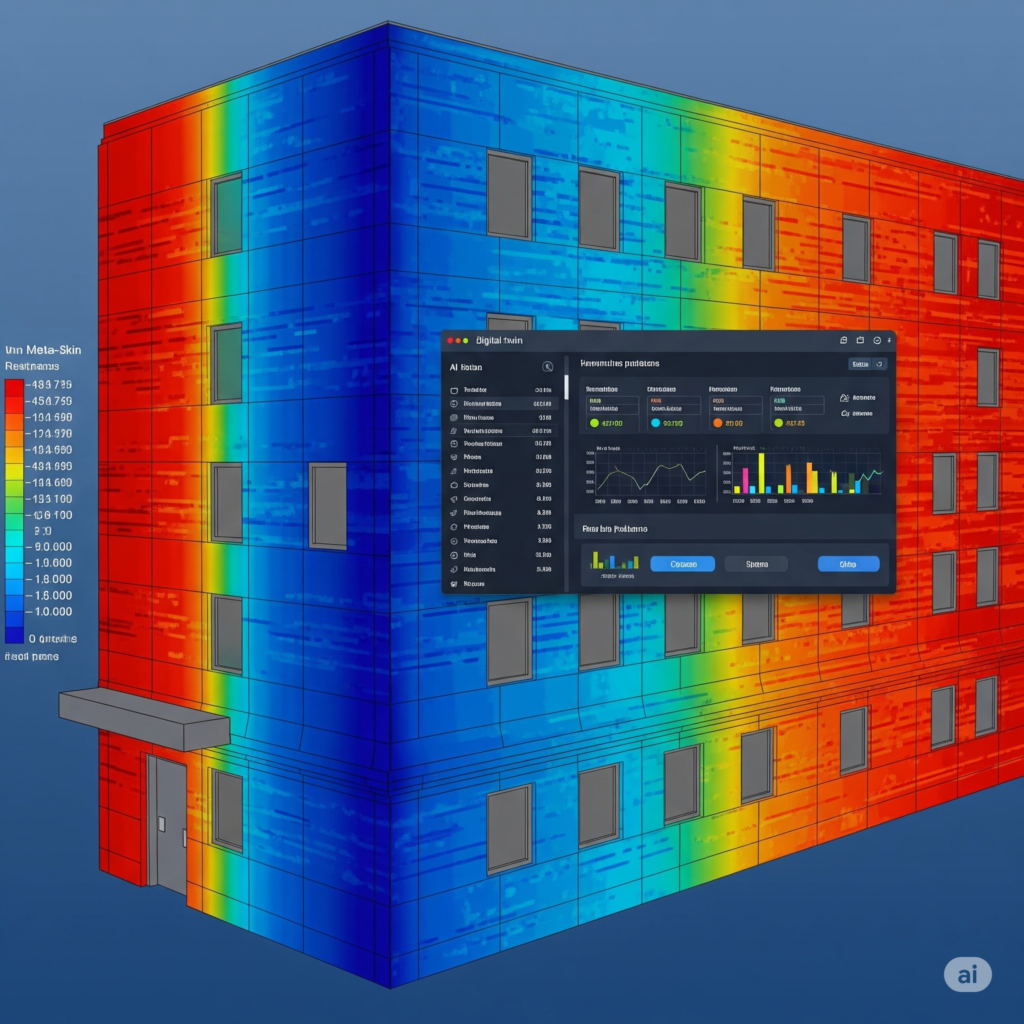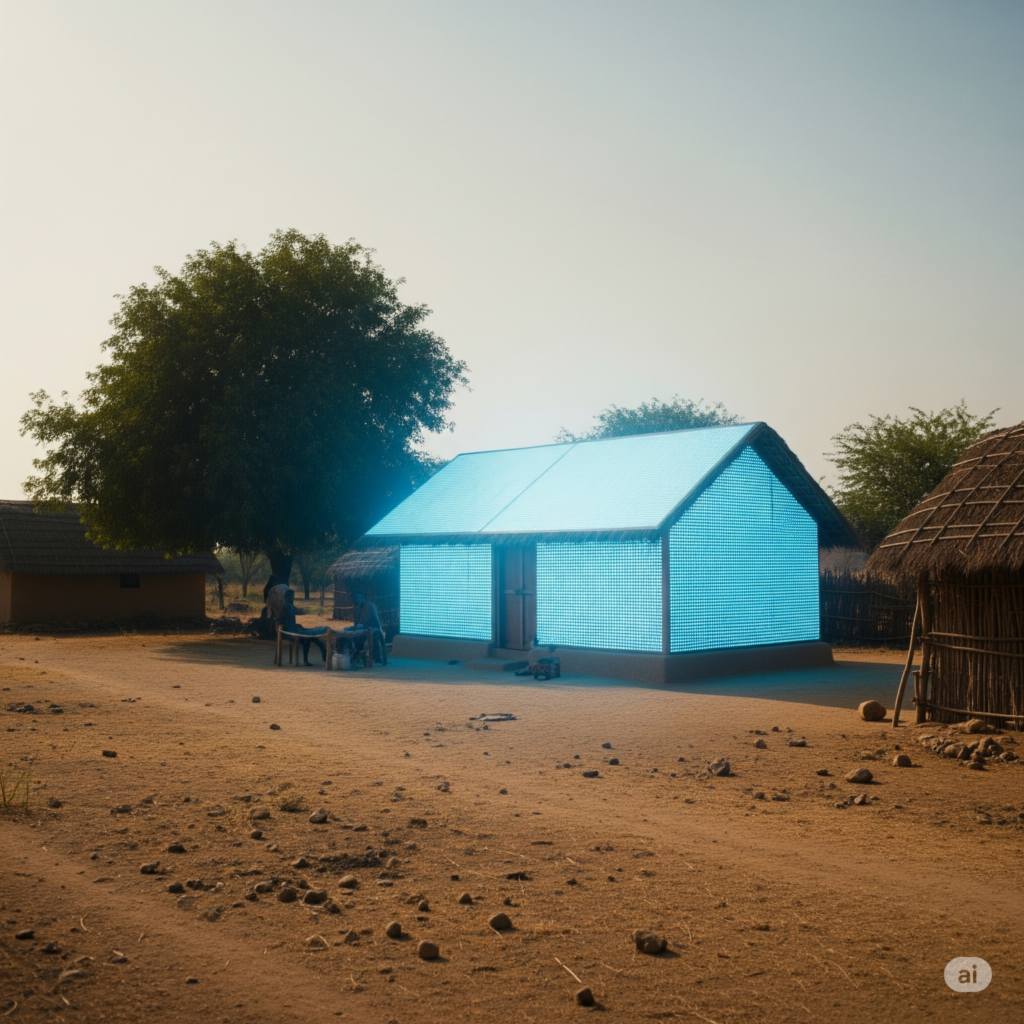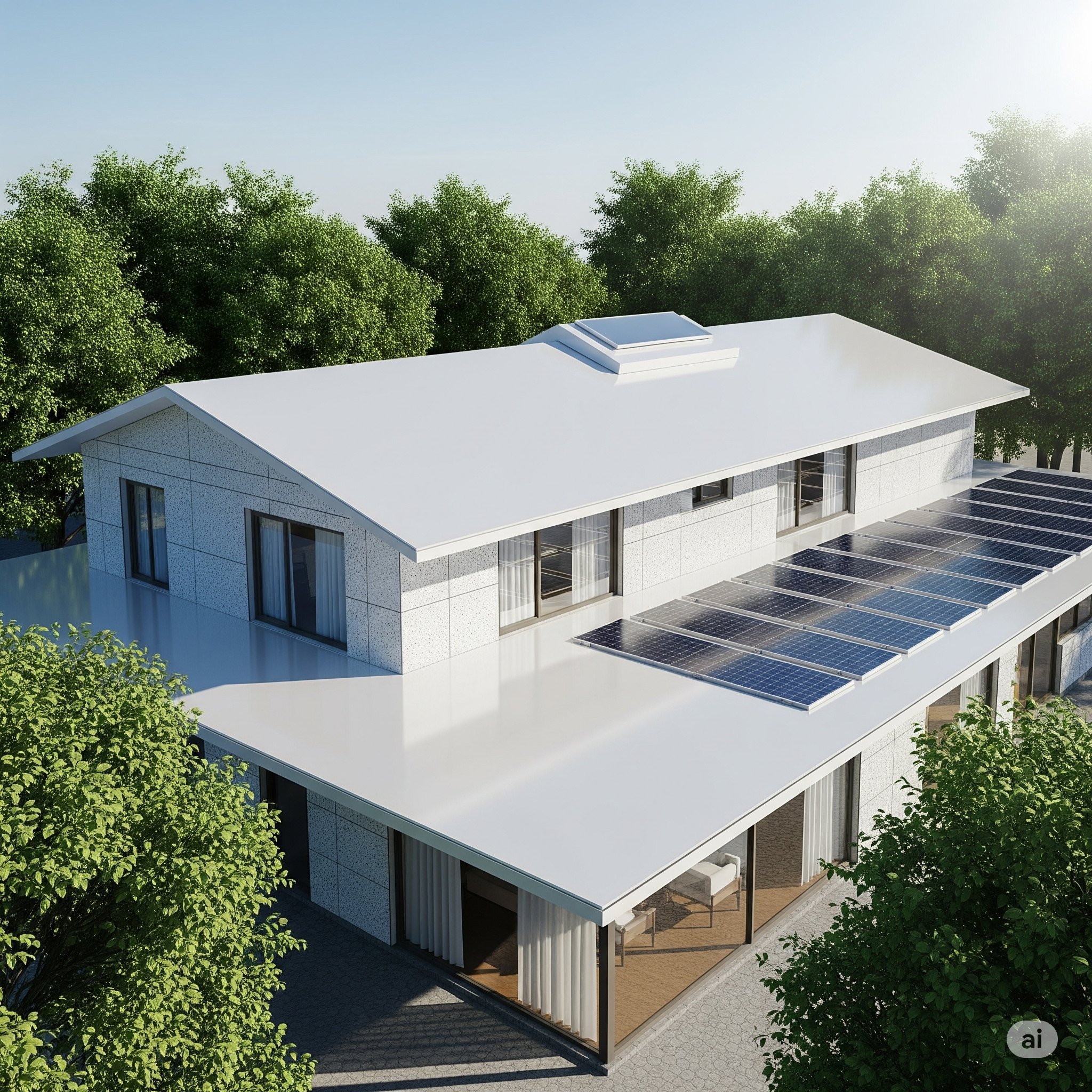As global temperatures soar, the demand for sustainable and energy-efficient cooling technologies has never been greater. With climate change triggering increasingly severe heatwaves and power grids struggling to meet the surging demand for air conditioning, scientists have developed a groundbreaking innovation: Thermal Meta-Skin. Leveraging the power of Artificial Intelligence (AI) and Machine Learning (ML), this ultra-thin coating could redefine how we cool our homes, vehicles, and even entire cities.
In a world where cooling systems account for about 10% of global electricity consumption, Thermal Meta-Skin offers a much-needed, zero-electricity solution to combat rising heat and energy usage.
What Is Thermal Meta-Skin?
Thermal Meta-Skin is a super-thin, multilayered coating engineered to reflect sunlight and emit heat as infrared radiation. It requires no electricity to operate and can be applied to the surfaces of buildings, vehicles, or even clothing.
Key Features:
- Passive cooling: Works without fans or external energy sources
- Multilayered structure: Optimized materials reflect sunlight and release heat
- AI-designed: Machine learning algorithms fine-tune the material properties for optimal performance in various climates
- Versatile application: Suitable for rooftops, walls, textiles, tents, military gear, and more
The technology has been proven to lower surface temperatures by up to 20°C, potentially saving 1,500 kilowatt-hours of energy per household annually.
The Science Behind Meta-Skin

Thermal Meta-Skin is composed of four engineered layers of material, each contributing to its cooling effect:
- Sunlight Reflective Layer: Bounces back most of the incoming solar radiation
- Infrared Emission Layer: Emits trapped heat back into the atmosphere
- Thermal Insulation Layer: Prevents external heat from penetrating the surface
- Protective Coating: Ensures durability and environmental resilience
By combining these functionalities, the coating maintains cooler surface temperatures under direct sunlight. AI and ML models simulate thousands of combinations to optimize these layers for different environmental conditions, such as high humidity or desert climates.
Role of AI and Machine Learning
Traditional material design can be time-consuming and limited by human experimentation. AI and ML revolutionized this process by:
- Rapidly analyzing material behaviors under different conditions
- Predicting optimal configurations for maximum heat rejection and durability
- Customizing coatings for specific geographies, surfaces, and use cases
This has made it possible to tailor the Thermal Meta-Skin for everything from urban apartment blocks to rural huts in tropical regions.
Real-World Applications
1. Urban Buildings
Reduces dependence on energy-intensive air conditioning, particularly in megacities facing urban heat islands.
2. Rural and Remote Areas

Offers a sustainable cooling solution in off-grid villages with unreliable electricity.
3. Vehicles and Aircraft
Lowers cabin temperature without running energy-consuming AC units, increasing fuel efficiency.
4. Military and Disaster Relief

Portable shelters and uniforms can use Meta-Skin to prevent heat exhaustion and enhance comfort in extreme environments.
5. Wearable Cooling Textiles
Future integration with clothing to offer comfort in hot and humid conditions without relying on power-hungry fans or gels.
Environmental and Economic Impact
- Energy savings: Significant reduction in residential and commercial cooling bills
- Emission reduction: Decreases reliance on fossil fuels, aiding climate goals
- Cost-effective: Easier to install and maintain than mechanical systems
- Durable: Long-lasting and resilient to environmental wear and tear
If widely adopted, Thermal Meta-Skin could reduce millions of tons of CO2 emissions annually and drive progress toward net-zero energy buildings.
Challenges and Considerations
- Scalability: Manufacturing and mass deployment still need investment
- Initial cost: While energy-saving long-term, upfront pricing must be affordable
- Durability testing: Long-term performance in real-world environments under varied weather must be validated
A Step Toward Climate Resilience
As the world grapples with extreme weather, sustainable infrastructure is no longer optional. Innovations like Thermal Meta-Skin offer hope for a low-carbon, heat-resilient future, especially in developing countries most vulnerable to climate shocks.
AI is not only automating tasks or optimizing logistics; it is actively reshaping how we interact with the environment, one surface at a time. This is climate technology at its smartest and most impactful.
Conclusion
Thermal Meta-Skin represents the intersection of cutting-edge material science, artificial intelligence, and climate innovation. As India and the world seek climate-adaptive infrastructure that doesn’t strain the energy grid, this passive cooling technology stands out as both futuristic and functional. If deployed at scale, it could revolutionize how we keep cool in a warming world, offering relief without emissions, comfort without compromise.








+ There are no comments
Add yours